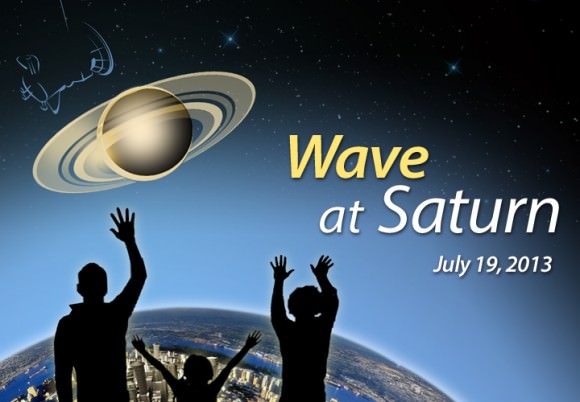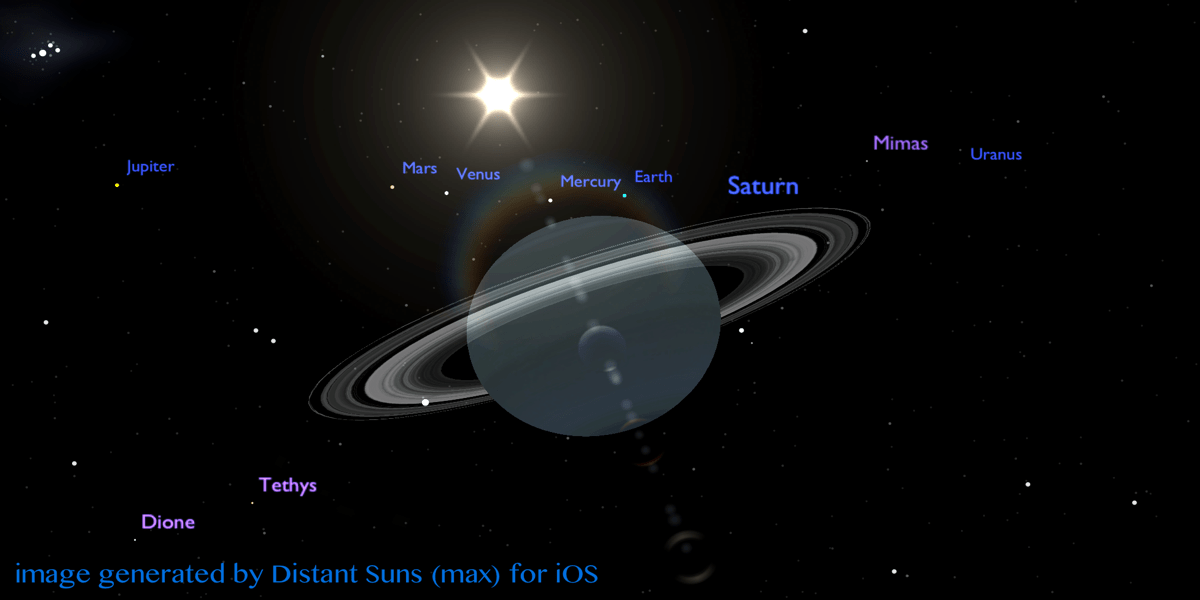You’ve hopefully heard about the chance to have your picture taken this Friday – along with the rest of humanity – by the Cassini spacecraft, currently about 1 billion km away as it orbits Saturn. But now another spacecraft has joined in on the fun.
Inspired in part by the Cassini team, scientists from the MESSENGER mission at Mercury realized their upcoming orbital parameters has Earth coincidentally in the crosshairs of its cameras as it takes images to search for natural satellites around Mercury on July 19 and 20. So we’ve got not one, but TWO spacecraft to smile at, pose for, and generally be on good behavior as they take pictures of planet Earth. Here’s when you should be smiling and waving:
MESSENGER will be taking images at 11:49, 12:38, and 13:41 UTC (4:49 a.m., 5:38 a.m. and 6:41 a.m. PDT or 7:49 a.m., 8:38 a.m. and 9:41 a.m. EDT, or) on both days, July 19 and 20. Parts of Earth not illuminated in the Cassini images, including all of Europe, the Middle East and Central Asia, will appear illuminated in the MESSENGER images. MESSENGER’s images also will take a few days to process prior to release, the team said.
The image taken from the Saturn system by NASA’s Cassini spacecraft will occur between 21:27 and 21:47 UTC (2:27 and 2:42 PDT, 5:27 and 5:42 p.m. EDT) on Friday, July 19. Cassini will be nearly 900 million miles (nearly 1.5 billion kilometers) away from Earth. NASA is encouraging the public to look and wave in the direction of Saturn at the time of the portrait and share their pictures via the Internet.

If Saturn isn’t in your field of view at the time, you can join in online to take a look at Saturn with Gianluca Masi and the Virtual Telescope Project from Italy.
Also, at the exact time the Cassini spacecraft is snapping pics of Earth, the Slooh Space Camera will be snapping images of Saturn – live and in true color – with live broadcast team. Their feed starts at 2:30 PM PDT / 5:30 PM EDT / 21:30 UTC with live views of Saturn from the Canary Islands.
We’ll embed the feed here:
There are events associated with this Wave at Saturn event, and we’ll repost the info from our previous article:
For all our astrophotographer friends out there, in cooperation with Astronomers Without Borders, TDTES is sponsoring a Saturn Mosaic project, where you can submit an image you’ve taken of Saturn. Urgency note: this has to be submitted by July 22, 2013.
Astronomers Without Borders is also sponsoring a special Saturn Observing Program, and they are encouraging people and organizations to either organize a special observing event for July 19 (you can register it as an official event here) or to attend an event near you. You can find TDTES events here. This can be a full-blown observing event with telescopes, or just an excuse to get together with friends to go out and look at Saturn in the night sky.
There are also two competitions — one is to submit photos that best represents Earth (the image must be taken on July 19, 2013) and another is to write an original song about this event. The digital versions of the winning entries will be beamed to space at a later date.
Find more information at The Day The Earth Smiled website, and the Astronomers Without Borders website.
NASA also has info about events for the #Wave at Saturn event, including charts on where and when to look for Saturn in the night sky here. NASA says these charts take into account the light travel time from Saturn.


Yeah … most of the wave at Saturn events politely ignore the light travel time …
If you wave at Saturn when the spacecraft actually shoots the image, you will be at least an hour (and more) late … it takes light more than a hour to travel to Saturn … so … you will be missed.
Just like Star Trek … NASA has politely but incorrectly ignored light travel time and time problems … everything happened instantaneously but … oh wait … lightspeed is such a drag … so it wasn’t included … I James Kirk left earth and traveled around the galaxy at warp 2 (and he traveled a lot faster most of the time) … hmmm … in five years … time dialation would have meant that everybody he knew when he left would have been dead for decades if not centuries or millenia depending on the direction traveled!
Oh but SNAP … NASA forgot to mention that there is a definite light lag to Saturn so if the Cassini Probe photographs earth
… You would need to do it earlier so that your photons would actually REACH Saturn during the photo period … hmmm … dunno where Saturn is in the orbit … It is probably superfluous anyway since there is no possibility that the resolution is sufficient to determine if people are out waving or not.
Based on today … 1,444,858,322 km at speed of light at
300,000 km/s … that comes to about 1.33 hours or about 1 hour 21 minutes
And the distance is growing … so it would be slightly longer later …
So based on this information, I would need to stand outside
and wave roughly estimated (based on NASA 21:27 to 21:42 UTC) … about 20:05 to
20:17 UTC or … 1:05 to 1:17 p.m. PST or about 3:05 to 3:17 p.m. EST – maybe up
to 5-10 minutes earlier … as I said the distance is growing.
Do the math correctly please
DOH!!!
How do you know they didn’t account for it already?
They DID account for the speed of light:
http://saturn.jpl.nasa.gov/news/waveatsaturn/timezones/
Actually they did account for light travel time.
Remember, the pictures will start being taken at 21:27 UTC on July 19—that
time has been calculated to include the time it takes light to get from Earth to
Saturn. So if you go out then, for the next 15 minutes the light from Earth will
be on its way to Saturn, to be captured by Cassini’s cameras.
http://www.slate.com/blogs/bad_astronomy/2013/07/17/waving_at_saturn_the_day_the_earth_smiled.html
We mentioned in our previous article about this event that NASA has taken into account the light travel time: http://www.universetoday.com/103455/hey-planet-earth-get-ready-to-smile-and-wave-for-a-camera-thats-a-billion-kilometers-away/
Not specifically mentioned in that article either … but if I follow one of the links in the article http://diamondskyproductions.com/recent/index.php#tdtes it does say that light travel time is taken into account …
I don’t chase every link in an article –
I fault the article/author for not mentioning it … it seems all the other writers DID mention it, Slate, NASA, etc.
It just goes to show that I should not believe everything I read in UniverseToday.com because there may be SERIOUS ommissions.